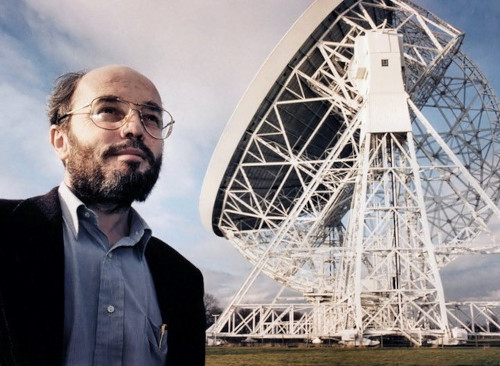 (Photographer unknown)
(Photographer unknown)
Jim Cohen
Contributed by Alan Pedlar, Anita Richards and Busaba Kramer
Jim Cohen was born on 25 June 1948 in Brisbane, Australia and died on 1 November 2006 in Manchester, UK at the early age of 58. Jim took a science degree at the University of Queensland followed by a Masters degree in Mathematics. In 1970 he won a Commonwealth Scholarship to Jodrell Bank Observatory at the University of Manchester. He obtained a PhD in Radio Astronomy in 1974, supervised by Rod Davies. Shortly after this he was awarded a lectureship and was promoted to a Reader in 1994. He initially made significant astrophysical contributions to the studies of high velocity neutral hydrogen clouds and their relationship with the Magellanic stream. Much of his research, however, was in studies of Galactic molecular emissions and in particular detailed investigations of masers using the MERLIN array. Highlights included confirming the relationship between the size of evolved star water maser shells and mass loss rate, deducing the radial velocity gradient in the wind from the supergiant star VX Sgr, and deducing the distribution of sub-mm water masers from single dish observations, confirmed decades later by ALMA. Jim continued Rod Davies' pioneering work on maser polarisation (still not fully understood) and if there was ever an awkward silence after a seminar, Jim would pipe up "What about the magnetic field?"
As well as careful and thorough tests of maser models, Jim was an expert observer, squeezing sensitivity out of innovative -- or elderly -- instruments. In the early 2000s Jim initiated the building of a new multi-beam receiver for the Parkes Telescope and led a consortium of ~20 UK and Australian astronomers to search for methanol masers, a project which proved to be outstandingly successful as a long-term resource for studies of high mass star formation.
Over his career he published almost 200 papers and supervised over 30 MSc and PhD students.
As well as his astrophysical research, Jim was deeply involved in international spectrum management, where he and colleagues endeavoured to reduce man-made radio interference for radio astronomy. He worked with the UK Radiocommunications Agency as well as the European Commission and the International Telecommunications Union in Geneva. Jim made numerous contributions in this area and played a major role in reaching an agreement between radio astronomers and the Russian Space authorities to mitigate the interference caused by the GLONASS global navigation system. This involved a visit to Moscow in 1992 with John Ponsonby, and Jim later attributed their success to appreciation of vodka as well as to persisting until they were able to meet with senior military personnel who were also scientists.
During 1994-2006, Jim supervised 4 Thai Ph.D. students in radio astronomy, pioneering the field in Thailand. His academic visits to Thai universities, delivering lectures on radio astronomy, laid the groundwork for its development. Today, Thailand benefits from his mentorship and foundational contributions, fostering a thriving radio astronomy community. Jim's dedication has left a lasting impact, shaping the trajectory of the field in the country.
Jim had a lifelong interest in music, and played the recorder, whistle and flute to a high standard. He played both in local classical orchestras and ceilidh bands and his students encountering the local Morris dancers were sometimes startled to recognise Jim (and the then Jodrell Bank Chief Engineer, Tony Battilana) complete with bells and whistles.
![[IAU logo]](iau_wb_thumb.jpg)
![[URSI logo]](URSI-logo-thumb.jpg)
![[Karl Jansky at his antenna]](jansky_photo_02_thumb.jpg)
![[Reber's Wheaton antenna]](Reber_Telescope_Wheaton_thumb.jpg)
![[Dover Heights]](Dover_Heights_02_thumb.jpg)
![[4C telescope]](GB61-195_4C_telescope_thumb.jpg)
![[Ewen and horn antenna]](ewen_horn1s.jpg)
![[Dwingeloo, 1956]](Dwingeloo-1956-thumb.jpg)
![[Jocelyn Bell Burnell and Cambridge antenna used in pulsar discovery]](burnell2_thumb.jpg)
![[Lovell Telescope at Jodrell Bank]](site_1594_0001-500-334-20180316163019-thumb150.jpg)
![[Wilson, Penzias, and Bell Labs horn antenna]](wilson-penzias-horn_thumb.jpg)
![[6-m Millimeter Radio Telescope in Mitaka, Japan]](6m-thumb.jpg)

